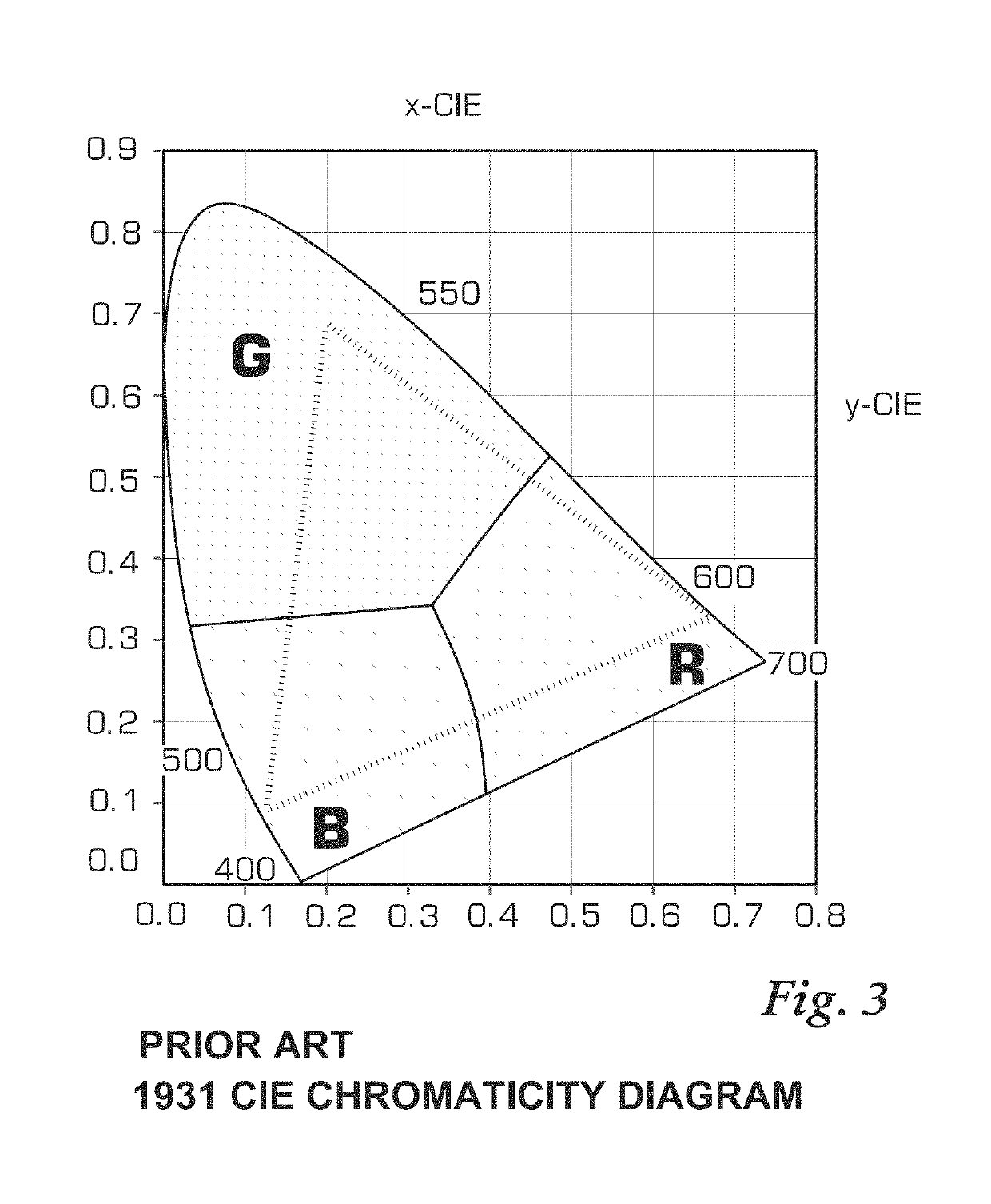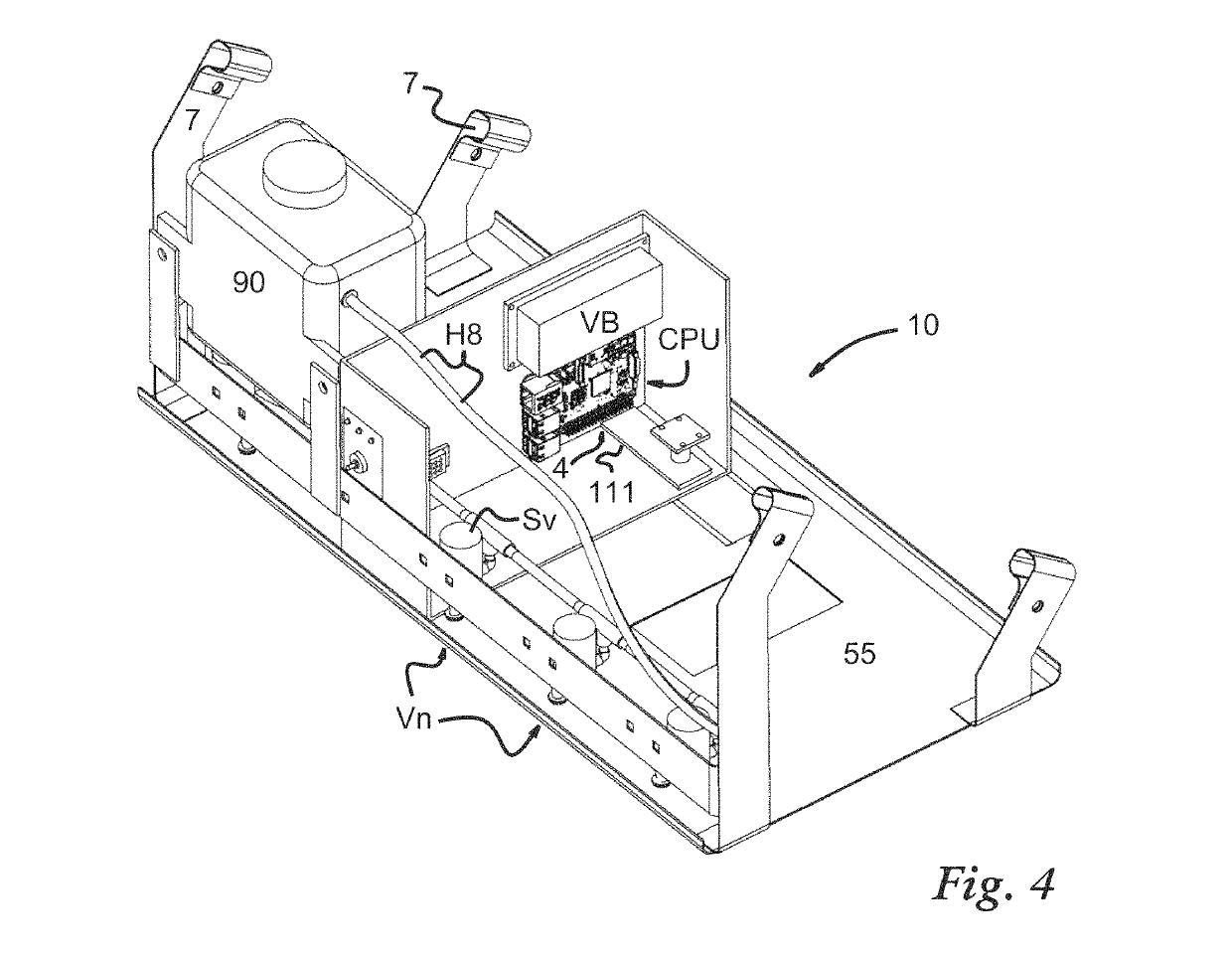Selective plant detection and treatment using green luminance photometric machine vision scan with real time chromaticity operations and image parameter floors for low processing load
a technology of green luminance and machine vision, applied in image enhancement, camera filters, instruments, etc., can solve the problems of reducing the use of pesticides for weed and plant control, adversely affecting the quality of ground water, and affecting the human nervous system, etc., to achieve low processing overhead, simple steps, and complex calibration
- Summary
- Abstract
- Description
- Claims
- Application Information
AI Technical Summary
Benefits of technology
Problems solved by technology
Method used
Image
Examples
Embodiment Construction
[0088]Now referring to FIGS. 4 and 5, oblique, partial surface views of an illustrative target plant detection and treatment system according to the invention are shown. Constituent components affixed to chassis 55 of a target plant detection and treatment system 10 as shown include a known single board computer CPU affixed there and in communication with field image camera with fisheye lens 4, which is not explicitly shown but can use known low cost CMOS active pixel sensors, and is trained downward upon a field as shown on the page, ready to gather a field image (shown, FIELD IMAGE). The single board computer CPU alone does all image capture processing and analysis, using machine instructions programmed as alluded to below. A light source strip 111 is also trained downward and can include commonly available known LED (Light Emitting Diode) lighting that consumes power on the order of single watts. Imaging can occur at various light intensity levels, but the use of supplemental ill...
PUM
 Login to View More
Login to View More Abstract
Description
Claims
Application Information
 Login to View More
Login to View More - R&D
- Intellectual Property
- Life Sciences
- Materials
- Tech Scout
- Unparalleled Data Quality
- Higher Quality Content
- 60% Fewer Hallucinations
Browse by: Latest US Patents, China's latest patents, Technical Efficacy Thesaurus, Application Domain, Technology Topic, Popular Technical Reports.
© 2025 PatSnap. All rights reserved.Legal|Privacy policy|Modern Slavery Act Transparency Statement|Sitemap|About US| Contact US: help@patsnap.com



